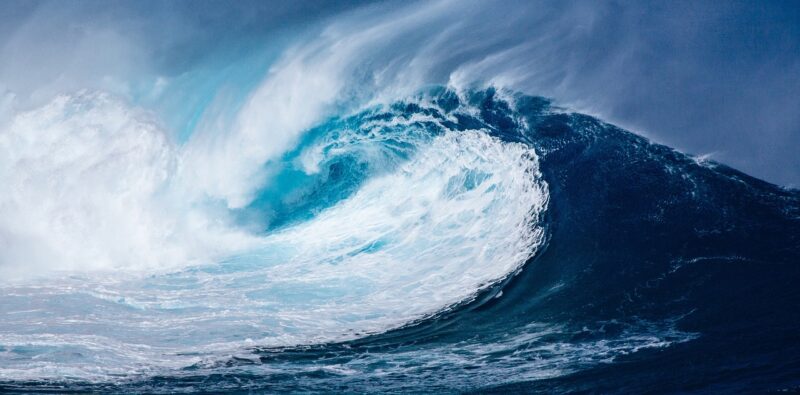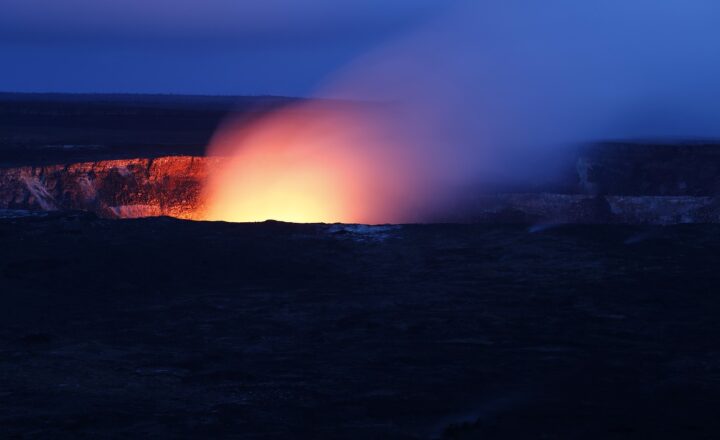
Tsunamis are among the most spectacular and devastating natural disasters known to humanity. Unlike regular waves produced by wind and tides, tsunamis feature a distinct formation process and exhibit tremendous energy, wreaking havoc on coastal communities. This article delves into the mechanisms behind tsunami formation, their characteristics, and the reasons for their overwhelming power.
1. Understanding Tsunamis: Origins and Causes
Tsunamis arise due to a variety of geological phenomena, primarily involving significant disturbances in or near large bodies of water. While the term may evoke images of catastrophic waves, the reality is that tsunamis are generated by specific events that include:
- Subduction Zone Earthquakes: The majority of tsunamis are generated by powerful underwater earthquakes, especially those occurring at subduction zones, where one tectonic plate is forced beneath another. These earthquakes can displace large volumes of water, setting off a tsunami.
- Volcanic Eruptions: Volcanic activity, particularly the collapse of a volcanic island or the explosive eruption of a volcano, can displace water and create tsunamis. The eruption of Krakatoa in 1883 is a prime example of this phenomenon.
- Landslides: Underwater landslides or landslides that occur in coastal regions can also displace water, resulting in tsunami waves. This can occur due to geological instability or the collapse of icebergs into the ocean.
- Meteorite Impacts: Although rare, the impact of large meteorites or asteroids on oceans can displace water and generate tsunamis, as illustrated by the extinction event believed to have caused the demise of the dinosaurs.
Understanding these causes helps us appreciate the powerful energy contained within a tsunami and its potential for destruction.
2. The Mechanics of Tsunami Formation
The mechanics of tsunami formation can be summarized in several critical stages, from the initial disturbance to the waves traveling across the ocean:
2.1 Initial Displacement
When an underwater earthquake occurs, it creates a sudden vertical displacement of the ocean floor. This movement pushes water upwards, creating a series of waves that can travel outward in all directions.
2.2 Wave Propagation
As tsunami waves propagate across the ocean, they can travel at speeds of up to 500–800 kilometers per hour (approximately 310–500 miles per hour) in deep water. In deep water, these waves have long wavelengths (up to 100 kilometers or more) and small amplitudes, making them nearly imperceptible to ships and coastal observers.
2.3 Wave Shoaling
When tsunami waves approach shallow coastal waters, they undergo a process called wave shoaling. As the waves encounter shallower depths, their speed decreases, and their height increases dramatically, often resulting in wall-like surf crashing onto shore.
3. Characteristics of Tsunami Waves
Tsunami waves possess unique characteristics that distinguish them from regular ocean waves. Key features include:
- Speed: In open water, tsunami waves can travel at the speed of a commercial jet, allowing them to reach coastal areas within minutes of the triggering event.
- Long Wavelengths: Although tsunami waves have small amplitudes in open water, their wavelengths can span dozens of kilometers. This attribute contributes to their ability to retain energy over vast distances.
- Multiple Waves: Tsunamis often consist of a series of waves, with the second or third waves potentially being more destructive than the first. This phenomenon, known as wave train, complicates evacuation efforts during tsunamis.
- Inundation Zone: As tsunami waves flood coastal areas, the depth and extent of inundation can vary depending on local geography, including bays, rivers, and coastal structures. This makes predicting tsunami impact challenging.
Understanding these characteristics highlights the challenges associated with tsunami detection and preparedness.
4. The Destructive Power of Tsunamis
The sheer force of tsunamis is awe-inspiring and catastrophic. Several factors contribute to their destructive power:
- High Energy: Tsunamis carry massive amounts of energy, capable of traveling across oceans without significant loss. When they reach land, this energy is released, resulting in immense destructive potential.
- Volume of Water: The volume of water displaced by a tsunami can be staggering, leading to flooding and the destruction of infrastructure, homes, and ecosystems along coastal regions.
- Long Duration: Unlike typical waves that crash and recede quickly, tsunami waves can persist for minutes, flooding coastal areas and causing further damage well after the initial wave passes.
- Lateral Pressure: Tsunamis exert powerful lateral pressure as they travel inland, capable of demolishing buildings, uprooting trees, and transforming landscapes.
The combination of these factors underscores the importance of preparedness and awareness in tsunami-prone regions.
5. Tsunami Warning Systems and Preparedness
Due to the significant risks associated with tsunamis, efforts have been made globally to enhance early warning systems and preparedness measures. Key components include:
- Tsunami Detection Buoys: These satellites and buoys can measure wave height and monitor seismic activity to provide real-time data and alerts regarding potential tsunami formation.
- Public Education and Drills: Communities in tsunami-prone areas are encouraged to undertake drills, understand evacuation routes, and recognize natural warning signs, such as a sudden and unusual withdrawal of water from the shore.
- International Collaboration: Global cooperation and information sharing are crucial for predicting and responding to tsunami threats effectively, with organizations such as the United Nations Educational, Scientific and Cultural Organization (UNESCO) leading the way.
Preparedness and awareness can save lives and mitigate the impact of tsunamis in vulnerable communities.
Conclusion
Tsunamis are powerful natural disasters that form due to geological processes such as earthquakes, volcanic eruptions, and landslides. Understanding their formation and characteristics not only reveals the importance of this natural phenomenon but also emphasizes the need for proactive measures in tsunami-prone areas. Through education, preparedness, and technology, communities can better defend against the destructive forces of tsunamis, safeguarding lives and property while fostering resilience in the face of nature’s fury.







